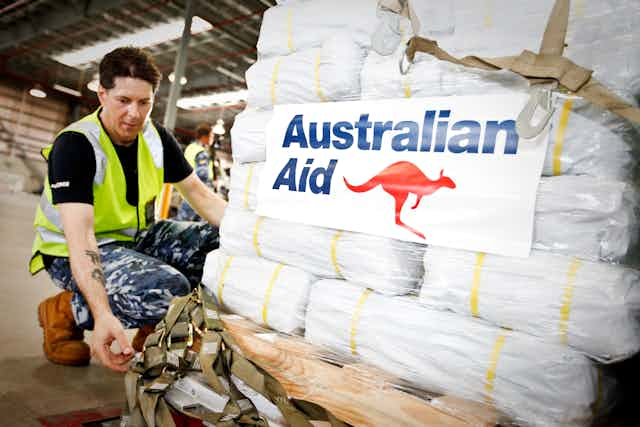Australia and Portugal have little in common except fine beaches. But, according to recently released estimates of 2015 foreign aid flows, they shared the distinction of being the two biggest aid cutters in 2015.
Now that Australia’s 2016 aid budget has been unveiled – with a further cut of well over A$200 million – we have moved into a class of our own.
Australia out of step
Most other donor countries, responding to unprecedented humanitarian challenges and recognising the importance of continued development progress for global stability, have been increasing their aid spending – so much so that total OECD aid reached a record high in 2015.
Six OECD countries – Denmark, Luxembourg, the Netherlands, Norway, Sweden and the UK – have met the United Nations target to provide at least 0.7% of their national income as foreign aid. Aid from the European Union countries accounted for 0.47% of their combined national income, the highest share achieved to date.
Fully 22 of the OECD’s 28 donor countries increased their foreign aid spending last year. As for the minority of countries that reduced aid, the largest cuts in proportional terms were those imposed by Australia and Portugal.
Australia’s ranking among OECD donor countries fell dramatically on every measure of generosity as a consequence of its 2015 cuts. On the most relevant and widely used such measure – the ratio of foreign aid to national income – Australia fell from 13th to 16th in 2015. On the absolute dollar amount, Australia went from ninth to 12th.
A generosity yardstick sometimes favoured by Foreign Minister Julie Bishop is the amount of foreign aid provided per donor-country citizen. Even on this measure – which is not a particularly good one since it leaves prosperity out of account – Australia fell from 11th to 14th in 2015.
So, on every measure of generosity there is, Australia fell three places in the OECD rankings in the space of a single year.
Australia’s fall would have been greater on the key measure – aid as a share of national income – except that the OECD monitors foreign aid on a calendar-year basis. In the 2015 budget, for financial year 2015-16, Australia’s aid was cut by A$1 billion – a massive 20%. This was the largest cut ever made; the OECD numbers included only half of it.
This year’s cut
The 2016-17 budget imposed a further cut of A$224 million. When the global donor rankings are updated next year, this additional cut, combined with the second half of the A$1 billion 2015-16 cut, is likely to drag Australia down even further.
One can gain a sense of how Australia might compare with other donor countries in 2016 by assuming other countries give exactly as much aid in 2016 as they did in 2015 and applying the US dollar exchange rate that prevailed in 2015, which is more favourable than the current rate. On that basis, Australia would fall another place to 17th in terms of aid as a share of national income.
The best measure of a country’s capacity to provide foreign aid is its national income per citizen. On this measure, the International Monetary Fund recently estimated that Australia ranked seventh among OECD donor countries in 2015 in US dollar terms, and eighth in terms of purchasing power. Evidently, Australia’s prosperity ranking now far outstrips its ranking as an aid donor.
The big drop in Australia’s generosity is not merely a relative one. It has much more to do with Australia’s cuts than with other countries’ increases. Between 2012 and 2016, Australia’s foreign aid as a share of national income has fallen steeply from 0.36% to 0.23%.
The lowest ratio of aid to national income previously recorded by Australia was 0.25% under the Howard government, in each of the three years 2003-05. After 2005, the ratio started increasing. For a time, there was bipartisan agreement to have it reach 0.5% – 50 cents in every A$100 – by 2015. Now Australia’s aid effort is less than half the level required to reach that abandoned target.
The total fall in Australian aid from 2014 to 2016 has saved about A$50 per Australian. Restoring at least this amount to the foreign aid budget from 2017 would do little to hamper budget repair and would substantially repair Australia’s international standing.
More importantly, it would enable Australia to play the part that it should as the OECD’s seventh-most-prosperous nation in financing humanitarian and development assistance in the Asia-Pacific region and beyond.

